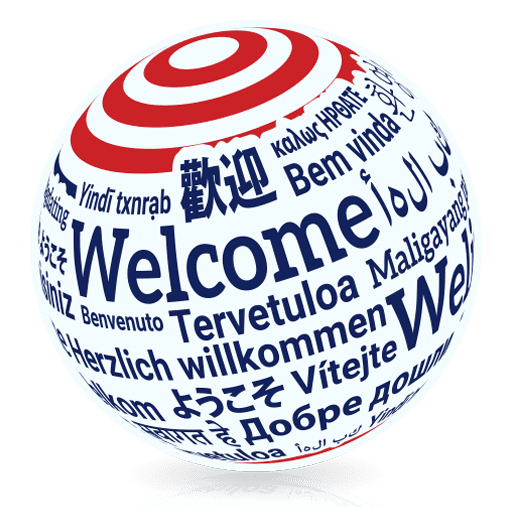In 2024, the top 10 most widely used languages will be Mandarin Chinese, English, Spanish, Hindi, Arabic, Bengali/Bangla, Russian, Portuguese and Japanese. These languages are spoken by over 3 billion people worldwide. They are also the official or co-official languages in countries with a total population of over 4.5 billion people. In addition to being the most commonly spoken language in the world, Mandarin Chinese is also the fastest-growing language. Between 2010 and 2015, the number of speakers grew by nearly 60 million. This is due to China’s growing economy and their increasing influence on the global stage. Not only is Mandarin Chinese becoming more widespread, but other specific dialects such as Wu Chinese and Cantonese are also on the rise. English remains the second most widely used language in the world due largely to the fact that it is an official language in so many countries. It is estimated that there are 1.5 billion speakers of English globally. However, its growth has slowed in recent years as other languages have gained popularity..”
1. English
English is an incredibly important language in our modern world. It allows for communication between people from a wide range of backgrounds and contexts, connecting individuals with new perspectives and ideas. English is especially useful for those looking to advance their academic or professional careers, as so many major institutions rely upon English to communicate information and ideas. As such, there are many benefits to having a strong understanding of the English language, such as improved access to knowledge, the ability to engage with others around the world, and greater employment opportunities. Learning and using English can open up a wealth of pathways for individuals from all walks of life.
2. Mandarin Chinese
Mandarin Chinese has become one of the most widely spoken languages in the world, with over 950 million people speaking it as either a first or second language.
As part of the Sinitic branch of Sino-Tibetan languages, Mandarin Chinese is spoken mainly in China, Taiwan, and Singapore. The emphasis on tones makes it a challenging language to learn; however, speakers are also offered more clarity in their communication as every nuance is accounted for.
With its presence deepening around the globe and more traditional Chinese culture becoming embedded in modern society, now is an optimal time to make Mandarin Chinese part of one’s linguistic repertoire.

3. Spanish
Spanish is one of the world’s most widely-spoken languages, with around 570 million native speakers scattered across the globe.
It has official language status in 20 countries, including Spain, Mexico and Argentina. Spanish is also an important second language to learn as it opens up many economic opportunities and serves as a valuable asset to those wishing to pursue international business ventures or jobs.
With its diverse cultural influence and widespread usage, learning Spanish can be an extremely rewarding experience both professionally and personally.

4. Hindi
Hindi is an official language in India and Fiji, spoken throughout South Asia. It is one of the most populous languages in the world and part of the Indo-Aryan group of languages within the Indo-European language family.
Hindi has a great deal of cultural significance, as it is widely used in poetry and prose throughout India. Moreover, with each dialect having its own unique characteristics, Hindi allows for great opportunities to tap into the cultural identity of local communities.
While Hindi is an important language for both written and spoken communication, it is also used to promote intercultural understanding between those who speak it natively and those from outside the region who are attracted by its depth and complexity. unprecedented levels of collaboration and growth potential.
From forging new relationships with clients in different countries to leveraging advanced technical resources like cloud computing, global services facilitate interactions that would otherwise be impossible.
Moreover, the cost savings provided by these services makes them an attractive option for those operating on tight budgets. In short, these services are an integral part of what makes global business possible today.
5. Arabic
Arabic is one of the oldest and most widely spoken languages in the world. Nearly 300 million people worldwide identify as native speakers of this ancient tongue. Not only is Arabic a living language, used extensively in everyday life throughout the Middle East and North Africa, but it also serves as the official language for multiple international organizations, including the United Nations and numerous international business entities. Its ability to span cultures makes it a unique treasure within our globalized society, and its lasting impact on literature, art, science and mathematics has been vast. It’s standing among languages continues to remain as influential today as it has been throughout history.
6. Bengali
With more than 250 million native speakers, Bengali is one of the most common languages in the world. It is spoken by people residing in Bangladesh and India’s West Bengal state, mainly in the eastern part of the subcontinent. Because it is so widely used, many educational institutions offer a long list of publications, examples of literary texts and grammatical rules to facilitate quick learning. With its rich culture and literature, Bengali has been recognized as an official language at various international forums. In India, Bengali is studied in school from primary level to tertiary education to continue increasing awareness about this ancient language. As a result, it remains an important means for communication across broad geographic areas within South Asia for generations to come.

7. French
French is a language of elegance and sophistication, treasured around the world for its many cultural offerings. From classic writers like Victor Hugo to timeless works such as ‘Les Miserables’, French literature is one of the richest and most varied out there.
But it doesn’t stop there- French cuisine might be one of the most beloved culinary offerings throughout history, with chefs learning the art around the globe. Even the music has captivated countless listeners through popular genres such as jazz, blues and even hip hop.
With so much to offer, it’s hard not to see why immersion in French culture can be an extremely rewarding experience.
8. Russian

Russia takes up a huge swath of the Earth’s surface, with its population occupying more land than any other country. Its people carry a culture steeped in thousands of years of history.
From ancient cities to the cold frozen tundra, Russian culture is incredibly diverse and complex. Well-known for its literature and art, Russia has produced many noteworthy names over the centuries.
World-renowned leaders such as Catherine the Great helped shape modern Russia into what it is today whereas authors like Tolstoy and Dostoevsky earned global renown for their work.
Spirited music and passionate dance are mainstays of Russian cultural heritage that still captivate audiences today.
With its rich heritage, varied geography, and wonderful talent pool, Russia continues to awe visitors from all over the world.
9. Portuguese
Portugal has a rich and vibrant culture that can be seen reflected in its various customs, language and cuisine.
Its official language is Portuguese, with some regional dialects having significant influence as well. Portugal’s strong sense of history can be seen in the numerous monuments and sites that it holds, many of which have been noted by UNESCO for their preservation efforts.
While wine production has existed in the region since antiquity, Portuguese wines are now well known for their distinct flavour and have come to define this area of the Iberian Peninsula.
Furthermore, music is also an important part of Portugal’s cultural traditions, featuring a range of genres from traditional folk to popular pop.
And finally, don’t forget about its unrivalled beauty! Portugal attracts visitors from all over the world with its sparkling shores, serene landscapes and breathtaking vistas.
10. Indonesia
Indonesia is an archipelagic nation of over 17,000 islands in Southeast Asia. It is home to a diverse range of cultures and languages.
Particular highlights include the beautiful beaches along Bali Island, the spiritual beauty of Java Island’s ancient Buddhist temples, and the largest lake in Southeast Asia, located on Sumatra Island.
Dotted throughout the archipelago are active volcanoes, world-famous dive sites, rainforests teaming with exotic wildlife, and unique festivals that celebrate Indonesian culture.
Indonesia offers something for everyone, be it adventure seekers wanting to explore all its hidden gems or those who just want to relax by one of its stunning tropical beaches. No matter what your preference is, Indonesia certainly has it all and more!

From English to Hindi and from Indonesian to French, this list has given us a great overview of the 10 most spoken languages in the world.
We have seen the diversity that different cultures bring to communication, as well as how understanding two or more languages can open doors for many opportunities.
From understanding business documents worldwide to communicating with our international friends, learning a new language can not only be beneficial on a professional level but can also be an incredibly enjoyable experience.
Whether it’s through conversational classes, language exchange clubs or even vacationing abroad and immersing yourself in a culture you can learn different dialects quickly and proficiently while having fun doing it.
Learning this array of languages inspired by our travels and facilitated by technology has never been easier!
Visit Our extensive language page




